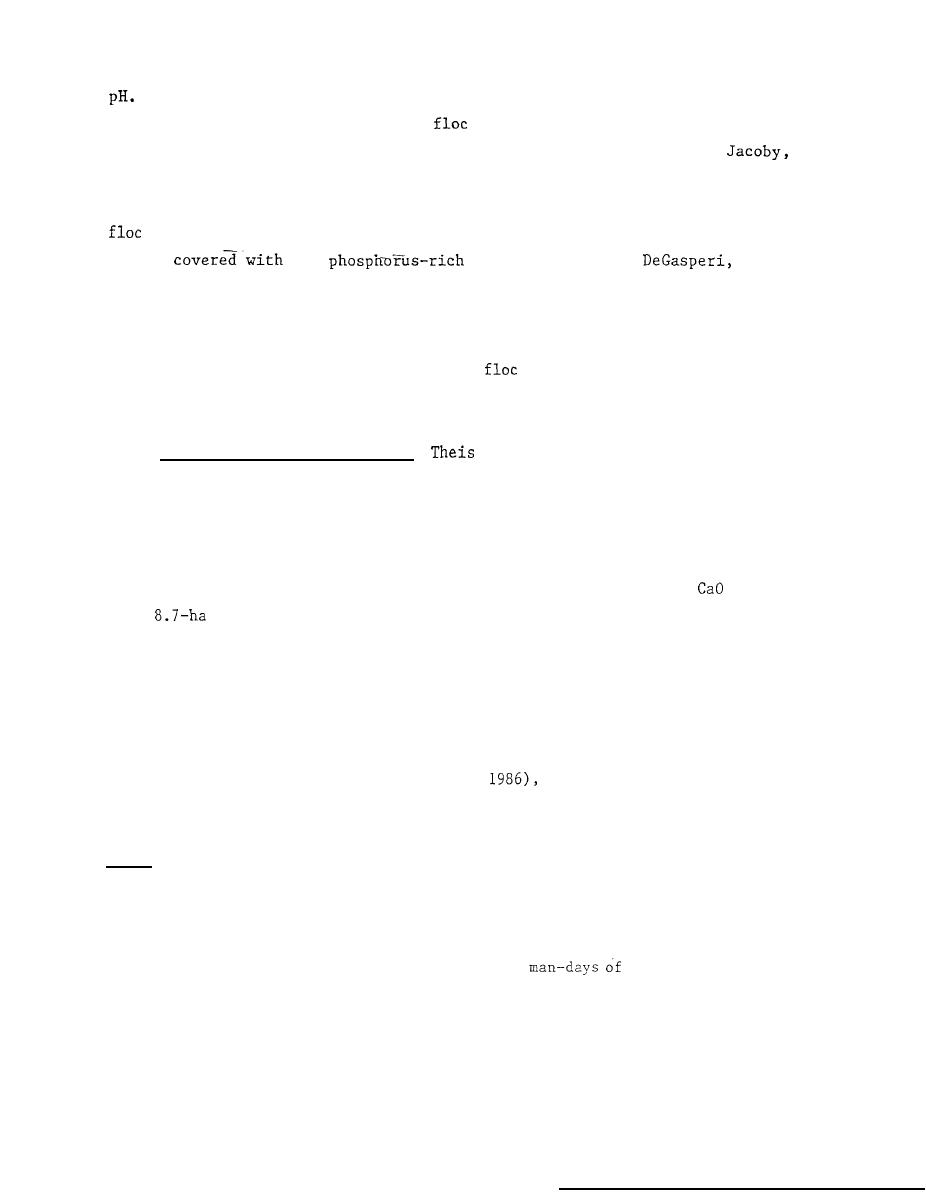
Transparency increased.
Internal phosphorus release was curtailed.
This
effect has lasted 4 years, and the
was not redistributed during a winter
of high winds and high flushing (Welch, Michaud, and Perkins 1982;
Welch, and Michaud 1983; Welch et al. 1988).
During the fifth summer, phos-
phorus levels were elevated, along with algae, and transparency declined.
The
layer apparently was dispersed to a deeper layer of sediment and also
became
new
materials (Welch,
and
Spyridakis 1986).
Lake bottom slope, sediment chemistry, dose, and application procedure
are among the factors that could have produced the disparity between the two
redistribution.
It would be
shallow, holomictic lakes with regard to
logical to be concerned about the problem in shallow, highly mixed reservoirs.
Only further testing can provide the answers.
et al. (1979) describe the treatment
Lake Charles East, Indiana.
of a section of Lake Charles East, Indiana, with fly ash, during summer 1975,
There
for the purpose of sealing the sediments to prevent internal loading.
appears to be no other published report of the full-scale use of this sub-
stance for this purpose.
About 1,430 metric tons of fly ash and 275 metric tons of
were added
Some evidence of a reduction in phosphorus con-
to a
area of the lake.
centration appeared, algal blooms were reduced, transparency increased, and
However, heavy
the phytoplankton was no longer dominated by blue-green algae.
metals, apparently from the fly ash, led to extensive mortality to fish and
invertebrates.
This case history, plus the several laboratory experiments with fly ash
illustrates the danger of
(reviewed in Cooke 1980 and Cooke et al.
Until further studies are completed,
using fly ash in lakes and reservoirs.
fly ashes should not be used for reservoir restoration (Cooke 1980).
costs
The principal cost of adding an aluminum salt to a reservoir is labor,
Cooke and Kennedy (1981)
and labor costs appear to be dependent upon dose.
summarized the small amount of published data on costs, and Cooke et al.
(1986) provided this equation for estimating
labor from a determi-
nation of its maximum dose, based upon reported costs from six lakes:
55



 Previous Page
Previous Page
